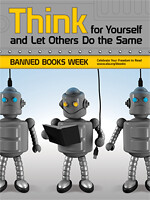James Hutton and the Discovery of the Earth’s Antiquity
By John Repcheck
Perseus Publishing 2003
James Hutton [1726-1797] the Scottish born & educated medical doctor is regarded, by Mr. Repcheck, as the father of the modern study of geology. This is the story of the formulation, dissemination, and gradual acceptance of Hutton’s geological theory: that the Earth was much older than the “6,000 years since Creation” as The Church steadfastly maintained at the time.
Using his powers of observation and logic to explain the geological evidence bared by Scotland’s harsh climate, Hutton applied something like scientific method to explain phenomena like the existence of marine fossils far above sea level. He proposed that the earth’s crust was cyclically thrust up- and much later- down by the earth’s inner pressures and heat over remarkably long [Hutton could not say how long] periods of time. As a member of what came to be known as The Scottish Enlightenment, Hutton regularly met in Edinburgh with the likes of Immanuel Kant, David Hume, Adam Smith, Joseph Black, and other thinkers. These men were, at the time, known as philosophers. The term scientist, Repcheck tells us, would not be used until the 1830s; but their thinking further fueled The Enlightenment’s
departure from the religion-based view of the world. Today’s scientists fix the age of the world at 4.6 billion years, a far cry from the 6,000 years held by Biblical scholars of Hutton’s time.
The Man Who Found Time is a good tale, reasonably well told. The author takes occasional tangents, some of which were interesting and informative. Overall, I found the book slow going; but worth the effort.
This guest post was written by Johnson Fortenbaugh, a gentleman and a scholar, who is at risk for cranial sunburn.











